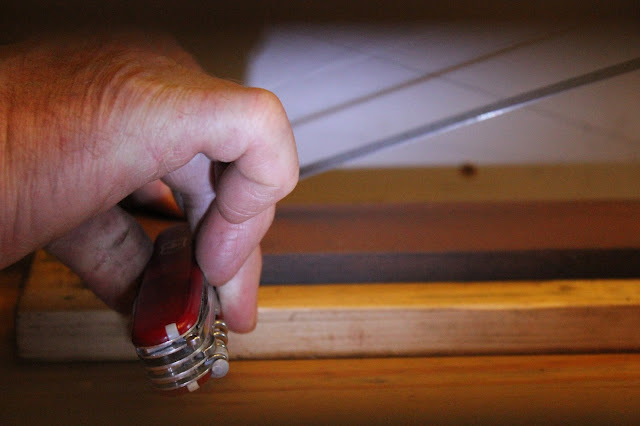I
have successfully used the method described in my last post to sharpen
most of my knife blades. But, I've found that for the smaller blade on
my Swiss Army Knife, it is harder to keep the straight edge against the flat face of the blade.
This took the form of a torsion spring off the brake calipers of a bicycle I had recuperated.
I cut the small tang off the spring and that was it ready for use!.
How to Use
The first step was to slide the spring onto the end of the straight edge.
Next, resting the straight edge on a piece of scrap wood, I inserted the tip of the knife blade between the spring and the straight edge.
This was a tight fit and the wood block ensured there was no chance of self injury when pushing the blade into place.
The straight edge was now firmly held in place against the blade face. The position of the straight edge could be altered so that only the knife edge came into contact with the face of the whetstone during the sharpening process.
Here it is in action.
Of course, you can use this little device to hold the straight edge on broader blades but bear in mind that to sharpen the other side of the blade you need to attach the spring and the straight edge to the other face of the blade.
Whatever you do, always use a wooden block when pushing the blade in place. Be safe!
Of course you don't have to dismantle the nearest bicycle to obtain a suitable spring, an extension spring of suitable diameter would work just as well.
Here's the film. Happy sharpening!
Thanks for dropping by and please feel free to share this article, comment, ask questions and if you'd like to be assured of getting the next post, then sign up to follow this blog.
All the best, Andy
© Andy Colley 2014

















